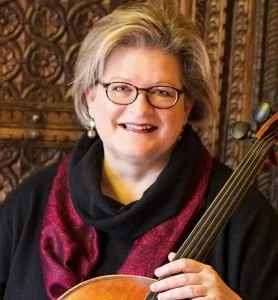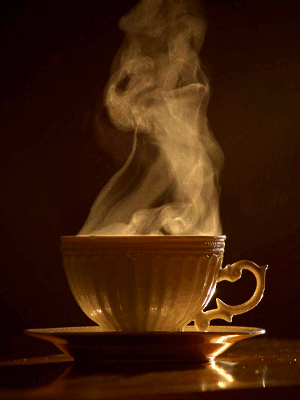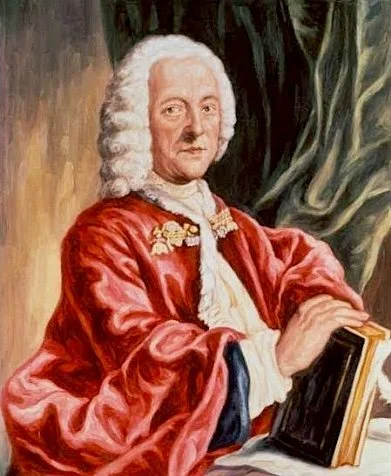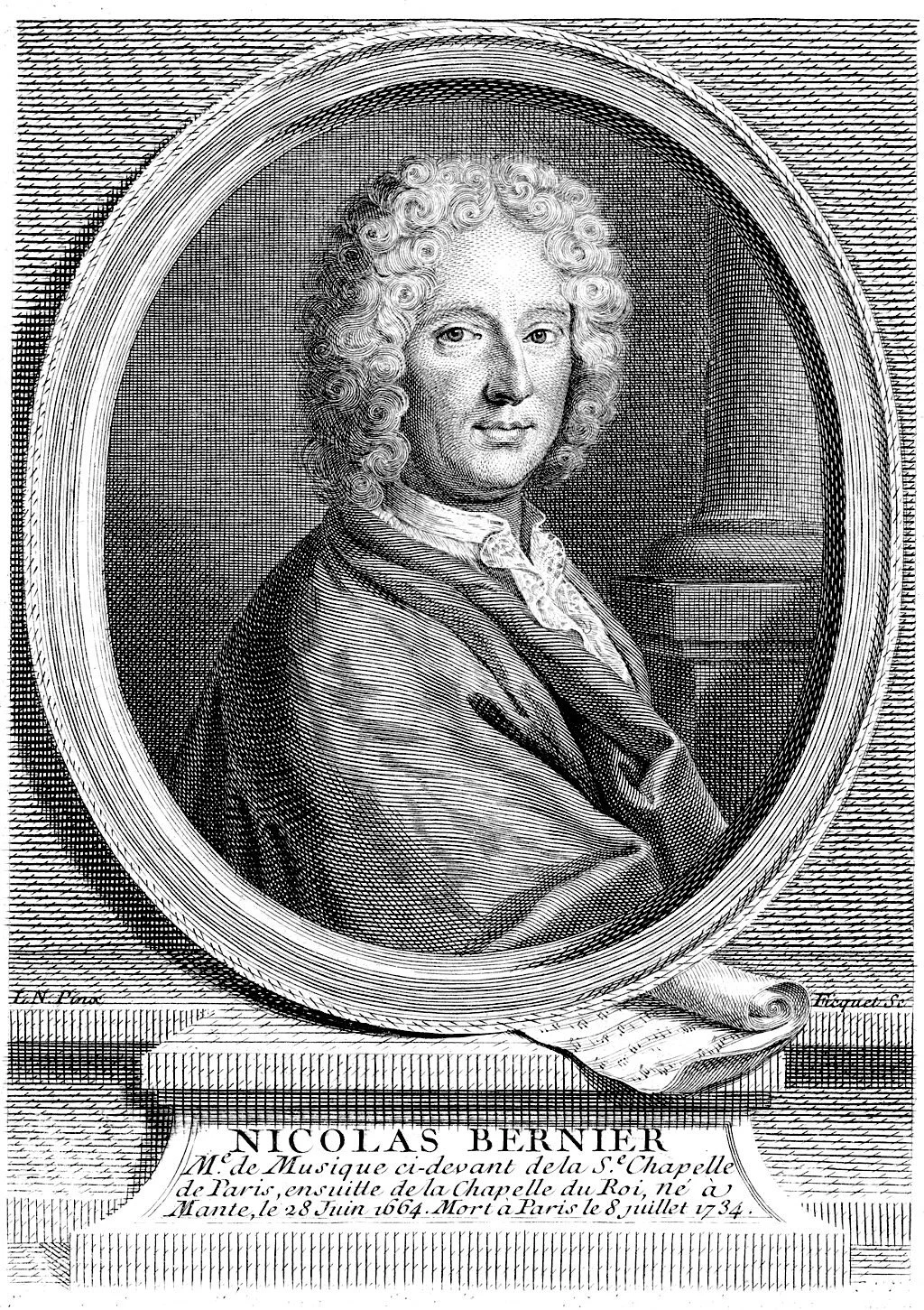A DAMN FINE CUP OF COFFEE!
(AND THE MUSIC’S GREAT, TOO.)
Kansas City Baroque Consortium Presents Bach at the Café Zimmermann
By Patrick Neas, KC Arts Beat
What a rarefied experience it must have been to sit around a table with Johann Sebastian Bach and Georg Philipp Telemann at the Café Zimmermann, as the tattooed barista served lattes decorated with a whimsical foam heart on top.
OK, there may not have been a tattooed barista or foam art, but other than that, the experience was probably very similar to hanging out in a contemporary coffeehouse.
Café Zimmerman was located on the fashionable Katharinenstrasse in Leipzig, where several of the city’s hottest coffeehouses were located. Coffee was quite trendy and very popular with Leipzig residents.
But there was a monumental difference between a typical Kansas City Starbucks and Café Zimmermann. The latter featured the Collegium Musicum, top-notch ensemble of university students and local musicians devoted to playing the latest music by Leipzig’s greatest composers. It was founded by Georg Philipp Telemann in 1702, before Bach took over in 1729. The group premiered many of Bach’s works, including some of his orchestral suites and various concertos and his secular cantatas, like the famous “Coffee Cantata.”
You’ll hear many of the works that were performed at this legendary coffeehouse when Kansas City Baroque Consortium led by cellist and artistic director Trilla Ray-Carter presents Bach at the Café Zimmerman: Coffee, Pipe & Drink — Vice, Virtue and Redemption at 7:30 p.m. Aug. 15 at Visitation Catholic Church and at 3 p.m. Aug. 17 at Gloria Dei Lutheran Church. The concert will also feature countertenor Jay Carter.
Trilla Ray-Carter, artistic director of Kansas City Baroque Consortium
Georg Philipp Telemann
Telemann was one of the most prolific composers who ever lived, and in the 18th century, he was more popular than Bach. While Telemann’s music was not as dense and cerebral as Bach’s music could be, Telemann was tuneful, witty and charming, drawing on influences from a variety of international styles.
The program will start with the first and final movements from Telemann’s Concerto for Recorder & Viola da Gamba in A minor, TWV. 52:a, a gem of the Baroque period. The first movement, marked “Grave,” is solemn and stately, setting a dignified tone. The fourth movement, “Allegro,” is lively and brisk, full of energy and rhythmic drive. The contrast between the two movements showcases Telemann’s versatility and the recorder’s expressive range.
We don’t know if Bach indulged in coffee, but based on his Coffee Cantata, BWV 211 we know he was definitely amused by those who did. In the cantata, a young woman named Liesgen has a bad coffee habit, which her father, Schlendrian (“Stick-in-the-Mud”), intends to curb. He threatens to withhold privileges — even marriage — if she doesn’t give up her coffee drinking ways. The witty and rebellious Liesgen responds with a delightful paean to the beverage.
The Coffee Cantata
EI! wie schmeckt der Coffee süße,
Lieblicher als tausend Küsse,
Milder als Muskatenwein.
Coffee, Coffee muss ich haben,
Und wenn jemand mich will laben,
Ach, so schenkt mir Coffee ein!
Ah! how sweet coffee tastes,
Lovelier than a thousand kisses,
Milder than muscatel wine.
Coffee, coffee I must have,
And if anyone wants to please me,
Ah, then give me coffee!
The Tobacco Cantata
Coffee wasn’t the only “vice” that inspired Bach’s brilliance. His secular cantata So oft ich meine Tobackspfeife (“Enlightened thoughts of a tobacco smoker”) BWV. 515 humorously extols the pleasures of smoking. Written around 1734, it’s another light-hearted departure from Bach’s more serious sacred works. The cantata pokes fun at the moralists of the time who condemned smoking, making it quite a unique gem in Bach’s repertoire. A playful ode to tobacco, with Bach’s signature musical brilliance.
Mit gutem Knaster angefüllt,
Zur Lust und Zeitvertreib ergreife,
So gibt sie mir ein Trauerbild –
Und füget diese Lehre bei,
Dass ich derselben ähnlich sei.
Die Pfeife stammt von Ton und Erde,
Auch ich bin gleichfalls draus gemacht.
Auch ich muss einst zur Erde werden –
Sie fällt und bricht, eh ihr’s gedacht,
Mir oftmals in der Hand entzwei,
Mein Schicksal ist auch einerlei.
Die Pfeife pflegt man nicht zu färben,
Sie bleibet weiß. Also der Schluss,
Dass ich auch dermaleinst im Sterben
Dem Leibe nach erblassen muss.
Im Grabe wird der Körper auch
So schwarz wie sie nach langem Brauch.
Wenn nun die Pfeife angezündet,
So sieht man, wie im Augenblick
Der Rauch in freier Luft verschwindet,
Nichts als die Asche bleibt zurück.
So wird des Menschen Ruhm verzehrt
Und dessen Leib in Staub verkehrt.
Wie oft geschieht’s nicht bei dem Rauchen,
Dass, wenn der Stopfer nicht zur Hand,
Man pflegt den Finger zu gebrauchen.
Dann denk ich, wenn ich mich verbrannt:
O, macht die Kohle solche Pein,
Wie heiß mag erst die Hölle sein?
Ich kann bei so gestalten Sachen
Mir bei dem Toback jederzeit
Erbauliche Gedanken machen.
Drum schmauch ich voll Zufriedenheit
Zu Land, zu Wasser und zu Haus
Mein Pfeifchen stets in Andacht aus.
Each time I take my pipe ’n tobacco
With goodly wad filled to the brim
For fun and passing time with pleasure,
It brings to me a thought so grim
And adds as well this doctrine fair:
That I’m to it quite similar.
The pipe is born of clay terrestrial,
Of this I am as well conceived.
Ah, one day I’ll become earth also –
It falls and breaks, before ye know’t,
And often cracks within my hand:
My destiny is much the same.
The pipe our wont is not to color,
It’s always white. And thus I think
That I as well one day while dying
In flesh at least shall grow as pale.
But in the tomb my body will
Be black like it when used at length.
When now the pipe is lit and burning,
We witness how within a trice
The smoke into thin air doth vanish,
Nought but the ashes then are left.
And thus is mankind’s fame consumed,
Its body, too, in dust assumed.
How oft it happens when we’re smoking
That, when the tamper’s not at hand,
We use our finger for this service.
Me thinks, then, when I have been burned:
Oh, if these cinders cause such pain,
How hot indeed will hell yet be?
I can amidst such formulations
With my tobacco ev’rytime
Such practical ideas ponder.
I’ll smoke therefore contentedly
On land, at sea and in my house
My little pipe adoringly.
Jay Carter
Antique Ulm burl wood pipe, Germany-Ulm 1790-1830
Henry Purcell’s Bacchus Is a Pow'r Divine, Z. 360
Henry Purcell
Across the pond in England, the composer Henry Purcell (1659-1695), who died ten years after Bach was born, was celebrating another temporal pleasure: drinking. Purcell wrote several drinking and tavern songs like I Gave Her Cakes and I Gave Her Ale, Down Among the Dead Men and Bachus is a Pow’r Divine.
The song is a spirited ode to Bacchus, the Roman god of wine, celebrating the pleasures of drinking and the carefree life it brings. The lyrics contrast the peaceful intoxication of wine with the chaos of war and ambition. The speaker revels in the fantasy of wealth and contentment brought on by wine, scorning worldly pursuits like honor and battle. The final lines humorously pit drunkenness against death.
Bacchus is a pow’r divine,
For he no sooner fills my head
With mighty wine,
But all my cares resign,
And droop, then sink down dead.
Some perhaps think it fit to fall and die,
But when the bottles rang’d to make war with me,
The fighting fool shall see, when I am sunk,
The diff’rence to lie dead, and lie dead drunk.
Erlebach and Bernier
Philipp Heinrich Erlebach
The first half of the program will conclude with works by two lesser known Baroque composers, Philipp Heinrich Erlebach (1657-1714) and Nicolas Bernier (1664-1734). Erlebach was a German composer, who, like Telemann, was very prolific. Unfortunately, most of his works were destroyed in a fire in 1735. However, his Sonata Sesta in F Major is part of his surviving set of six sonatas for violin, viola da gamba, and basso continuo. These works are rare gems from a composer whose legacy is mostly unknown.
This work in five movements features a pairing of violin and viola da gamba that reflects Erlebach’s fusion of Italian lyricism with French dance elegance.
I. Affetuoso - Allegro - Grave
II. Allemande
III. Courante
IV. Sarabande & Variation
V. Gigue (Vivace e prestò)
Nicolas Bernier
Bernier was a highly regarded French Baroque composer. In fact, he succeeded Marc-Antoine Charpentier as maître de musique des enfants (master of choristers) at Sainte0 Chapelle in 1704. His music is a delicious blend of French and Italian influences. Speaking of a delicious blend, like Bach, Bernier also wrote a coffee cantata. Le Caffe cantata, (3e Livre, No.4) is a charming secular cantata composed around 1703. It celebrates the pleasures of coffee with wit and elegance, and was written several decades before Bach’s Coffee Cantata.
Café, du jus de la bouteilie
Tu combats le fatal poison,
Tu ravis au dieu de la treille
Le beuveur que ton charme eveille
Et tu le rens à la raison.
Le sage s’ it s’ amuse a boire
Ne se livre qu’ à tes douceurs,
Tu sers le filles de mémoire
Qu’ Apollon célèbre ta gloire
La sienne acroist par tes faveurs.
Coffee, juice from the bottle
You fight the fatal poison,
You steal from the god of the vine
The drinker whom your charm awakens
And you bring him back to reason
And you bring him back to reason
Only indulges in your sweets,
You serve the daughters of memory
May Apollo celebrate your glory
His own increases through your favors.
Resist Sin
After all of this indulgence in vice, the second half of the program opens with an exhortation to virtue. Bach’s cantata Widerstehe doch der Sünde (“Just resist sin”), BWV 54.
Composed during Bach’s Weimar period, it was likely first performed on 15 July 1714 for the Seventh Sunday after Trinity. It stands out as Bach’s first surviving solo cantata, and its moral clarity, harmonic daring and expressive economy make it a profound miniature of sacred drama.
The cantata opens with a jarring dissonance. John Eliot Gardiner describes Bach’s approach as a calculated jolt, designed to awaken the listener to the imperative: “stand firm against all sinning, or its poison will possess you.”
Widerstehe doch der Sünde,
Sonst ergreifet dich ihr Gift.
Laß dich nicht den Satan blenden;
Denn die Gottes Ehre schänden,
Trifft ein Fluch, der tödlich ist.
Die Art verruchter Sünden
Ist zwar von außen wunderschön;
Allein man muß Hernach mit Kummer und Verdruß
Viel Ungemach empfinden.
Von außen ist sie Gold;
Doch, will man weiter gehn,
So zeigt sich nur ein leerer Schatten
Und übertünchtes Grab.
Sie ist den Sodomsäpfeln gleich,
Und die sich mit derselben gatten,
Gelangen nicht in Gottes Reich.
Sie ist als wie ein scharfes Schwert,
Das uns durch Leib und Seele fährt.
Wer Sünde tut, der ist vom Teufel,
Denn dieser hat sie aufgebracht.
Doch wenn man ihren schnöden Banden
Mit rechter Andacht widerstanden,
Hat sie sich gleich davongemacht.
Just resist sin,
lest its poison seize you.
Don’t let Satan blind you;
for those who defile God’s honor
will incur a curse that is deadly.
The appearance of vile sin
is indeed outwardly very beautiful;
however, one must afterwards, with sorrow and frustration,
experience much hardship.
On the outside it is gold;
yet, going further in,
it shows itself as only an empty shadow
and a whitewashed grave.
It is like the apples of Sodom,
and those who engage with it
will not attain God’s kingdom.
It is like a sharp sword
that pierces through body and soul.
Whoever sins is of the devil,
since he has brought it forth.
Yet if one is able, with virtuous devotion,
to withstand its contemptible bonds,
it is already done away with.
Let’s Dance!
Bach was devoutly religious man who signed every sacred composition with S.D.G. (Soli Deo Gloria - "to God alone be the glory”), but he was far from being a glum 18th century Lutheran. While resisting sin, he could compose lighthearted works about drinking and smoking. There is a joy that permeates so much of his secular music. For example his orchestral suites, which are basically collections of French dance music. They were most likely first performed by the Collegium Musicum in Café Zimmermann.
The program ends on a festive note with Bach’s Orchestral Suite No. 3 in D. It’s the most famous of his four orchestral suites, largely due to its second movement—the celebrated Air, often referred to as Air on the G String. The Air movement has transcended its original context, becoming a staple of classical repertoire and a symbol of serene beauty. The suite as a whole showcases Bach’s ability to blend French elegance with German contrapuntal depth, making it a standout in his orchestral output.
Ouverture
Air
GavotteI/II
Bourrée
Gigue
Café Zimmermann
Bach at the Café ZimmermanN
Coffee, Pipe, & Drink: Vice, Virtue & Redemption
featuring Jay Carter, countertenor
7:30 p.m. Aug. 15 at Visitation Catholic Church, 5141 Main St.
3 p.m. Aug. 17 at Gloria Dei Lutheran Church, 5409 NW 72nd St.
FOR TICKETS AND MORE INFORMATION, KCBAROQUE.ORG











